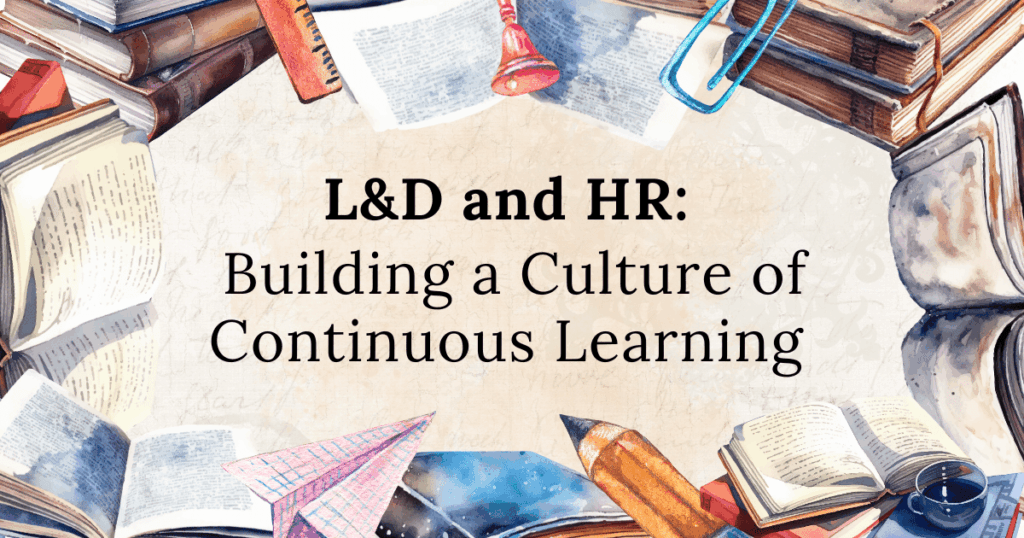
As the world evolves around us, businesses with a veritable culture for perpetual learning are more capable of innovating and succeeding. Learning and Development courses offered by L&D and Human Resources (HR) teams play a pivotal role in shaping and sustaining this culture, helping employees stay engaged and focused, enhancing their skills, and aligning them with the company’s strategic objectives. This is how L&D and HR departments can work together to form a proactive environment focused on continuous learning and career development.
The Strategic Role of L&D and HR in Continuous Learning
1. Aligning Learning with Business Goals: The L&D departments and HR ensure that learning initiatives meet the organisation’s goals. Operational efficiency improvement, customer satisfaction enhancement, or innovation driving are all business goals that, if achieved, would provide value to the organisation and should have a measurable outcome from each Learning and Development course.
2. Identifying Skill Gaps: HR and L&D should be able to understand the need for skill development where it is needed through market research, employee feedback, and performance reviews. Helping employees upskill will benefit the company by allowing it to appear advanced to competitors and ready to face upcoming challenges in real time.
3. Promoting Growth Mindset: Company Culture should be embedded with a growth mindset. HR can nurture employees to see challenges as quests for acquiring new knowledge and skills. L&D can support change by providing Learning and Development courses, workshops, and off-the-job training tailored for upskilling and reskilling.
Key Aspects of Cultivating Continuous Learning
1. Appointing Learning Champions: Leaders should participate in continuous learning initiatives by attending workshops, mentoring, or following the pre-defined learning structure steps they crafted for themselves. This shows that they support the business and motivates everyone else.
2. Accessible Learning Opportunities: HR should work with L&D to offer diverse and accessible learning options, including:
- Online courses and e-learning platforms
- In-house training sessions
- Professional certifications
- Cross-functional projects and job rotations
3. Recognition and Rewards: Appreciate employees’ efforts towards learning and growth. Public acknowledgement, certificates, and promotions are ways to recognise employees’ efforts.
4. Feedback and Development Plans: Regular performance reviews and feedback-based conversations will help employees clearly understand their career growth path and fulfil the company’s needs.
Leveraging Technology for Continuous Learning:
1. Learning Management Systems (LMS): By incorporating an LMS, businesses can monitor development, personalise training sequences, and equip employees with a one-stop platform for all learning materials.
2. Microlearning: In this busy world, dedicating time to learning new subjects is harder for any business professional. L&D teams should design more miniature courses so employees can learn anytime and anywhere.
3. AI and Data Analytics: Introducing AI tools in Learning and Development courses will maximise the learning efficiency as AI can recommend personalised training.
Conclusion: Embedding continuous development into your company’s structure can help HR and L&D develop resilience and success over the long run. This cooperation guarantees the business’s staying adaptable and competitive in a world of constant change and helps staff members reach their best potential. Using an organised approach to learning, everyone can find the opportunity to grow.

Leave a Reply